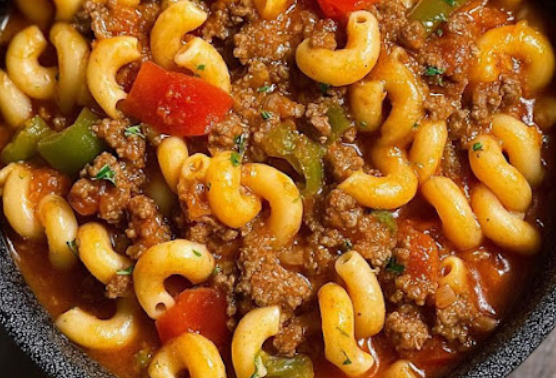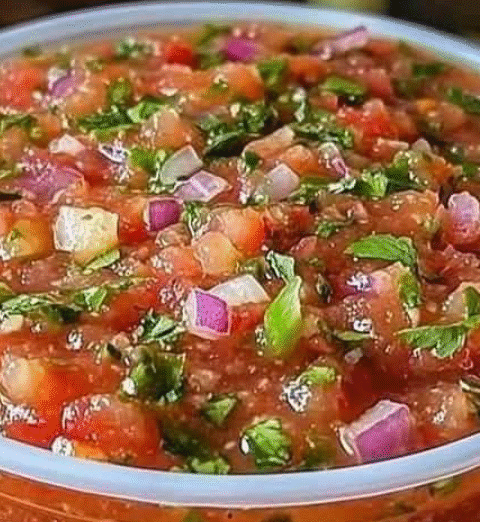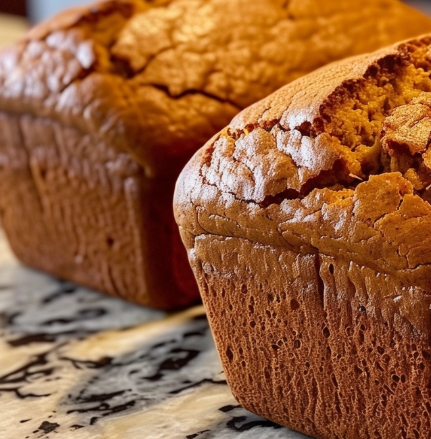Old Fashioned Goulash: The One‑Pot Wonder That Fed Generations
There’s a kind of magic in a dish that asks for so little… and gives back so much.
No fancy techniques. No exotic ingredients. Just a single pot, a few humble staples, and a simmer that fills your kitchen with the smell of tomato, garlic, and browned beef.
Introduction: A Taste of Home That Needs No Presentation
Old fashioned goulash is more than just a meal—it’s tradition, comfort, and memory in a bowl. For generations, families have gathered over this hearty, no‑fuss dish, its rich flavors whispering stories of simpler times. Whether you’re cooking for a crowd or feeding one, this one‑pot wonder delivers warmth, nourishment, and satisfaction with every spoonful.
In this article, we’ll explore:
- The origins and history of goulash
- Key ingredients that make it humble but powerful
- Health benefits and nutritional profile
- A step‑by‑step recipe and expert tips
- Safety, variations, and answers to common questions
Origins & Heritage of Goulash
What Is Traditional Goulash?
Goulash (or “gulyás” in Hungarian) began as a simple shepherd’s stew in the plains of Hungary. Made with meat (traditionally beef), paprika, onions, and sometimes potatoes, it was cooked by herdsmen over open fire in cauldrons. Over time, it became a staple of peasant households—adaptable, forgiving, and deeply satisfying.
Why It’s Loved Across Cultures
This dish has crossed borders—appearing in many European cuisines and beyond—because it embodies what people everywhere crave: warmth, comfort, and nourishment that doesn’t require fuss. The modest ingredients let everyone contribute, stretch what they have, and still produce something that feels like a feast.
Ingredients: Simple Staples, Big Flavor
- Beef (or alternative protein): Chuck roast or stew‑meat are ideal for slow simmering. For lighter versions, use ground turkey or plant‑based substitutes.
- Onions & Garlic: Provide the aromatic base.
- Tomato Paste or Sauce: Gives richness, acidity, and deep flavor.
- Paprika & Spices: Paprika is traditional; salt, pepper, maybe a bay leaf or thyme add depth.
- Vegetables (optional but pleasant): Bell peppers, potatoes, carrots—whatever is on hand.
- Broth or Stock: Beef, chicken or vegetable—to simmer and bind flavors.
- Starch (optional): Noodles, rice, or dumplings to serve it over or in it.
Health & Nutrition: What’s in the Pot
Nutritional Snapshot
Even though goulash is a “comfort food,” it can deliver real nourishment, especially when made consciously with quality ingredients. Let’s break down what a typical serving provides and how it supports your health.
Nutrition & Health Benefits Table
| Component | Approximate Amount per 1 Bowl (≈ 350 g) | Health Contribution |
|---|---|---|
| Calories | ≈ 400‑500 kcal | Good energy source; useful for active appetites. |
| Protein | ≈ 30‑35 g (from beef) | Supports muscle repair, immune function, satiety. |
| Fat (total) | ≈ 15‑20 g (varies with cut of meat) | Supports energy, fat‑soluble vitamin absorption. |
| Carbohydrates | ≈ 30‑40 g (potatoes or noodles) | Fuel for the body; balances the protein content. |
| Fiber | ≈ 4‑6 g (if including vegetables) | Supports digestion, gut health. |
| Vitamin C | ≈ 15‑25 mg | Antioxidant; supports immune health. |
| Iron | ≈ 3‑4 mg | Important for red blood cells, energy levels. |
| Potassium | ≈ 700‑800 mg | Helps with blood pressure, fluid balance. |
| Vitamin A / Beta‑carotene | Varies depending on added vegetables | Supports vision, skin health. |
| Sodium | Depends on added salt or salted broth | Should be monitored especially if high blood pressure is a concern. |
Health Considerations & Benefits
- Muscle & Tissue Maintenance: Thanks to high protein content.
- Immune Support: Garlic, onions, vitamin C from tomatoes/vegetables.
- Satiety & Weight Management: Combination of protein, fiber, and moderate fats helps you feel full longer.
- Micronutrient Rich: Iron, potassium, B‑vitamins, etc.
- One‑Pot Convenience “Win”: Less waste, less energy (cooking), fewer dishes = less stress, more time.
Recipe: Old Fashioned One‑Pot Goulash
Ingredients (serves 4‑6)
- 1.5 lbs (≈ 700 g) beef stew meat or chuck roast, cut into 1‑inch cubes
- 2 Tbsp olive oil or other cooking fat
- 1 large onion, diced
- 3‑4 cloves garlic, minced
- 2 Tbsp paprika (sweet or smoked, to your taste)
- 1 Tbsp tomato paste
- 1 can (14 oz / ≈ 400 ml) diced tomatoes or tomato sauce
- 2 cups beef broth (≈ 500 ml)
- 2 medium potatoes, peeled and chopped (optional)
- 1 bell pepper, chopped (optional)
- Salt & pepper to taste
- Fresh parsley for garnish
Step‑by‑Step Instructions
- Heat the pot over medium‑high heat. Add oil. Brown the beef in batches to avoid crowding; remove and set aside.
- In the same pot, add onions. Sauté until translucent. Add garlic and cook until fragrant (about 1 minute).
- Stir in paprika and tomato paste; cook briefly to release fragrance.
- Add browned beef back in. Pour in diced tomatoes and beef broth.
- If using, add potatoes and bell pepper now. Bring to a boil, then reduce heat to low.
- Cover and simmer for about 1½‑2 hours (or until beef is tender), stirring occasionally and adding more broth or water if necessary.
- Adjust seasoning with salt & pepper. Garnish with parsley before serving.
Safety & Expert Cooking Tips
Advice from Expert Chefs
Chef Gordon Ramsay emphasizes patience: “Don’t rush the browning step or the simmer. That’s where flavour builds.”
Chef Ina Garten suggests using good beef stock and letting the goulash rest a little before serving—it allows flavors to meld fully.
Health & Food Safety Notes
- Meat Safety: Ensure beef is browned properly for flavor, and cooked through to safe internal temperature (≈ 63 °C for medium‑rare cubes, longer for stewed meat).
- Storage: Cool leftovers quickly; store in refrigerator within 2 hours. Use within 3‑4 days, or freeze for longer shelf life.
- Allergens & Sensitivities: Some may be sensitive to garlic or strong spices. Adjust accordingly.
- Sodium Control: Use low‑sodium broth, limit added salt, especially if serving with salty sides.
Variations & Ways to Make It Your Own
- Vegetarian/Vegan Version: Replace beef with hearty mushrooms, lentils, or plant‑based meat. Use vegetable broth.
- Spicy Kick: Add chili flakes or smoked paprika for some heat.
- Different Starches: Serve over egg‑noodles, rice, or even mashed potatoes.
- Herbal Twists: Thyme, bay leaves, or even a dash of smoked oregano can shift flavor profiles.
Frequently Asked Questions (FAQs)
1. How do I avoid the beef becoming tough?
Make sure to brown your beef properly, then simmer gently over low heat for a sufficient time. A tight lid helps retain moisture.
2. Can I cook this in a slow cooker or Instant Pot?
Yes. In a slow cooker, cook on low for 6‑8 hours or high for 3‑4 hours. For Instant Pot, use the “meat/stew” setting and follow manufacturer’s directions, reducing cooking liquid slightly.
3. Is it okay to freeze leftovers?
Absolutely. Freeze in airtight containers. Thaw overnight in fridge before reheating. Reheat gently, adding a splash of broth if needed.
4. What side dishes pair well?
Crusty bread, mashed potatoes, buttered noodles, or a fresh green salad are all great complements.
5. Can I reduce fat content?
Yes. Use leaner cuts of beef, trim visible fat, or substitute part of the beef with beans or mushrooms. Also use modest oil for browning.
6. How do I make it gluten‑free?
Ensure your broth is gluten‑free, and choose gluten‑free starches (rice, potatoes). Avoid noodles unless certified gluten‑free.
7. What if I don’t have paprika?
While paprika is traditional, you can use smoked paprika, chili powder, or a mix of mild spices—though flavor will differ.
8. Is there a lighter version?
Yes. Use lean meat, reduce or omit potatoes, add more vegetables, use less oil, and serve smaller portions.
9. How do I adjust for high altitude cooking?
Liquids evaporate more at altitude, so you may need to add a little extra broth and allow longer simmer time.
10. Can I prepare parts ahead of time?
Certainly. You can brown the beef and sauté onions/garlic a day ahead, store in fridge. When ready, finish the cooking with liquids and let simmer.
Internal Resources & Related Reading
For more meal ideas that feel like home, see our articles at Cozy Stews & Soups and Hearty Comfort Foods. To learn about using simple ingredients in maximum flavor recipes, check Simple Ingredient Recipes.
Conclusion
Old fashioned goulash reminds us that a great meal doesn’t need to be complex. With humble components, patient cooking, and a generous portion of love, it nourishes body, soul, and community.
So pull out your pot, gather those staple ingredients, and let tomorrow’s memories begin with today’s simmer.






